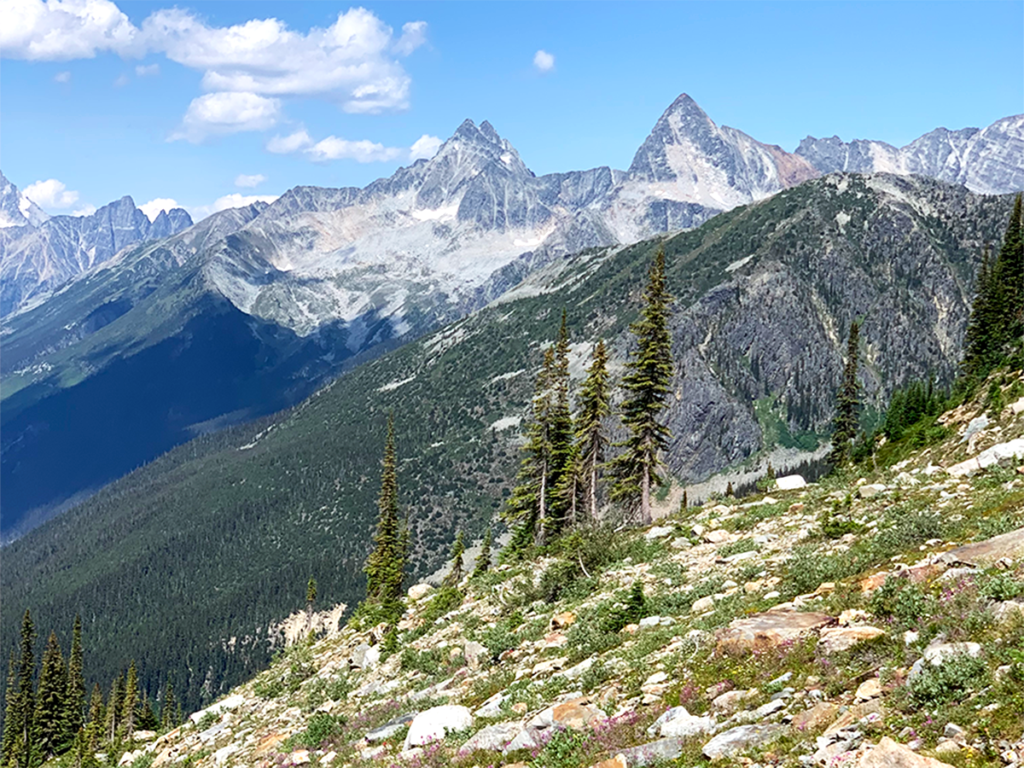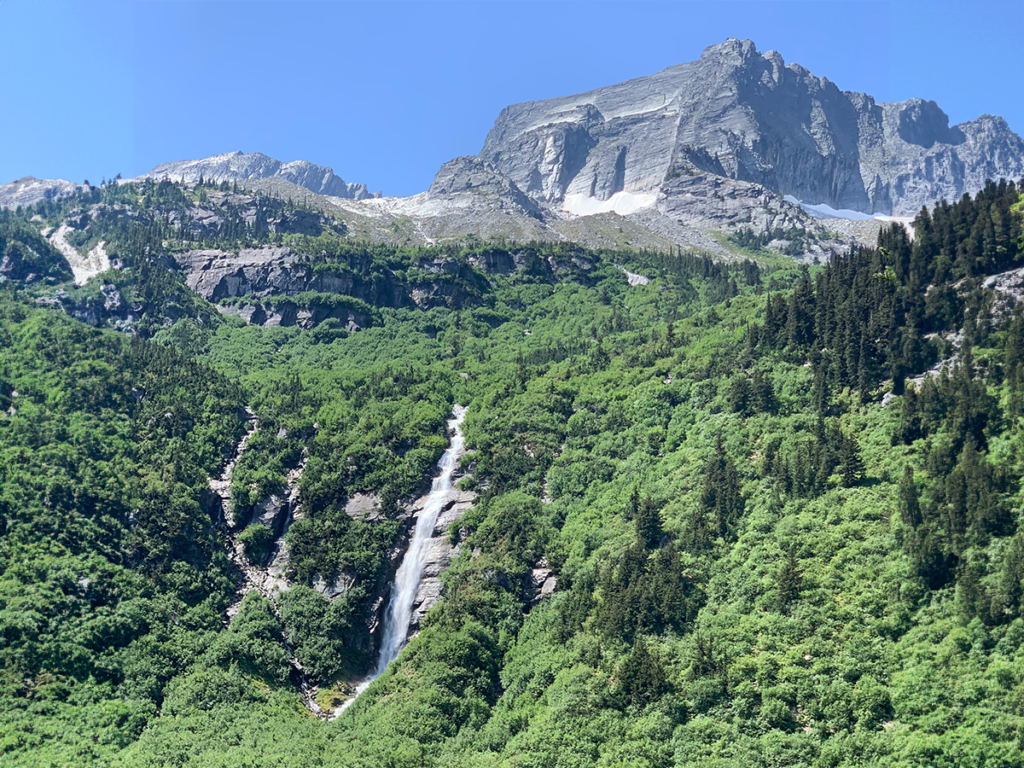Get to Know Canada’s Glacier National Park:
I think it’s incredibly important to learn the history of places we travel to. Sometimes during our travels, we can over-plan and rush through our itineraries. We tend to snap pictures of pretty views and then move on to the next pretty thing. I’m more than guilty of this!
However, I find that when I take the time to learn the history of the place I’m about to explore it helps me slow down. Then when I’m there, I can fully bask in the awe and wonder of our world.

Indigenous History and Present Day:
Long before Glacier National Park was established, the region was home to various Indigenous peoples, each with their unique cultures, languages, and connections to the land.
Today, Glacier National Park falls within the traditional territories of several Indigenous nations, including the Secwepemc (Shuswap), Syilx, (Okanagan), Ĩyãħé Nakón mąkóce (Stoney), Ktunaxa (Kootenay), and Sinixt (Lakes) nations.
Glacier National Park has the Columbia River running on both its Eastern and Western borders which was particularly important for trade and transportation. This created a hub for trade routes within the region, facilitating the exchange of goods, ideas, and cultural practices.
The arrival of European settlers and the development of the Canadian Pacific Railway had devastating impacts on Indigenous communities throughout the region. The influx of newcomers led to forced changes in their traditional ways of life, Indigenous sovereignty and land rights.
Despite colonialism and its legacy, Indigenous communities in the region have shown remarkable resilience. You can learn more by checking out Indigenous Friendship Society of Revelstoke and this message from Tourism Revelstoke.
Establishing Glacier National Park:
The Canadian Pacific Railway was completed in 1885, running right through Canada’s Rocky Mountains. Taking inspiration from down south, the railway company and the federal government created National Parks surrounding the rail lines.
When Glacier National Park was established in 1886 it became Canada’s third National Park. Banff National Park was Canada’s first, closely followed by Yoho National Park and Glacier National Park (both established on the same day!) Thanks to the railway, getting to these beautiful mountains in the middle of nowhere was now relatively easy! Anyone who could afford the trip was taking the opportunity. And to host all of these new tourists, a grand hotel and dining hall, known as Glacier House, was built at the base of the mountains holding the Illecillewaet Glacier!
Outdoorsmen and women from all over the world were now flocking to Glacier National Park. Climbing guides built cabins and teahouses and established the trails we hike to this day!
However over the years, the mountains proved to be too harsh an environment for a railway, especially during the winter months. A massive avalanche in 1910 killed 58 railway workers. This was the last straw for the Canadian Pacific Railway Company and they re-built the railway to spiral within the mountains as opposed to within the valley. The iconic Spiral Tunnels were built relying on forced labor from internment camps. Thousands of individuals, primarily of Ukrainian and other Eastern European descent, were unjustly interned and subjected to harsh conditions while contributing to the railway’s development. This dark chapter in Canadian history further impacted Glacier National Park as the restructuring altered the railway route, diverting traffic away from the park’s doorstep.
Without the railway stopping directly at the Glacier House to drop off tourists, the hotel lost it’s customer base and closed in 1925. All that remains of the grand Glacier House is the stone foundations, which you can check out yourself if you visit the Illecillewaet Campground.
Nerd Out on Nature in Glacier National Park in BC:
Glacier National Park is a part of the awe-inspiring Selkirk Mountain Range offering endless scenery of towering peaks that house mountain-top glaciers and deep, lush valleys filled with old-growth forests.
True to its name, Glacier National Park holds around 400 glaciers on its mountain peaks! These glaciers play a vital role in feeding the headwaters of major rivers like the Columbia River. When you’re exploring the alpine you’ll witness epic view of glaciers, stand on top of ancient rocks, walk through alpine meadows bursting with wildflowers and hear Pika’s chirping away in the rock fields. Maybe if you’re lucky you’ll spot some Mountain Goats!
But before the absolutely freezing glacier runoff water makes it to the major rivers, it has to run down valleys, creating lush forest habitats. And you know whose a big fan of these habitats? Grizzly bears, black bears and caribou!
Don’t forget to bring your camera, binoculars and your favourite field guide!

Check Out These Hiking Trails!
Glacier National Park has so many trails! I believe it’s somewhere around 25 hiking trails ranging from easy strolls to strenuous mountain adventures.
If you’re looking for a (fairly) short, super steep hike where you can backcountry camp on top of a mountain, check out my Hermit Trail Hiking Guide.
And if you’re looking for a longer hike that takes you through lush valleys, crosses over bridges and ends in a wildflower meadow with a glacier runoff river flowing through it, check out my Asulkan Valley Hiking Guide.
